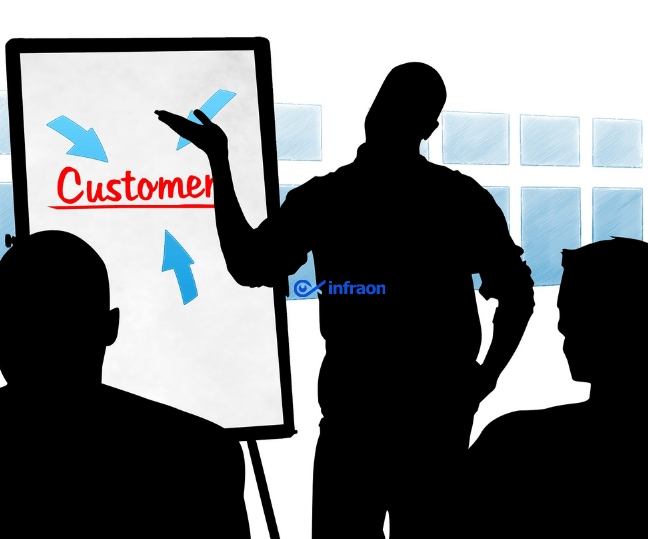In today’s highly competitive world of SaaS solutions and B2B services, the phrases customer success vs. customer service are tossed about like cards on a poker table.
Both are necessary for a company’s or brand’s success. Customer success and customer support differ in their approach: one is proactive, while the other is reactive.
Using these phrases interchangeably might lead to misunderstandings outside and inside your company. As a result, we must identify and investigate the differences between them and how, when combined, they might catapult your company to new heights.
According to recent customer service statistics, 86% of consumers are willing to pay more for a better customer experience, highlighting the importance of delivering exceptional service to retain and attract customers.
Read our related article customer success tips
Customer Success vs. Customer Service
What are Customer Support and Customer Success?
Customer Support teams assist customers with product issues and provide training on utilizing the product. They collaborate with other operational units such as engineering and development to enhance existing features while collecting feedback from customers for forthcoming release cycles.
Customer support is the assistance provided by a business to address customer inquiries, troubleshoot issues, and ensure a positive experience. It involves resolving problems, offering technical help, and guiding customers throughout their journey, aiming to enhance satisfaction and build lasting relationships.
6 Key Differences Between Customer Success and Customer Support
Customer Success and Customer Support teams and projects should generally collaborate to provide a complementary approach to customer service.
However, there are a few differences
- Reactive vs. proactive
Customer Support is often “reactive,” It responds to a customer’s request for assistance or when they contact them with an issue or query.
On the other hand, Customer Success is “proactive” and focuses on assisting customers in identifying and achieving their objectives.
- Skills and disciplines
Customer Support professionals share skills in engineering, marketing, and operational teams.
On the other hand, Customer Success professionals are more consultative and can cover various disciplines and industry experience.
Practitioners in all roles must be compassionate, creative problem solvers with a thorough grasp of the customer.

- Relationship-oriented vs. transactional
The majority of Customer Support and service interactions are transactional, and they begin when a customer contacts the team and end when their request is fulfilled.
On the other hand, Customer Success does not have an endpoint. It’s a continuous, dynamic, and persistent focus on enhancing current connections to strengthen the tie between the customer and the business.
A customer that never completes onboarding, for example, will not provide more revenue.
- Metrics and KPIs
Customer Support metrics at most companies are focused on monitoring and improving both the speed and quality of assistance interactions. This level of assessment usually ignores events that occur before or after the support interaction.
Customer Success, on the contrary, is concerned with the beneficial effects that those encounters may have on a happy customer, such as:
- Retention rates have improved.
- Increased repeat purchases due to higher LTVs
- Upsell and cross-sell rates have increased.
- Recruiting and hiring
Considering Customer Support is a field that has been around for more than two decades, roles and best practices for recruiting are well-established.
When it comes to Customer Success, though, the field is (generously speaking) only ten years old. We don’t yet have the depth or breadth of expertise to offer us a definite and convergent view on the “correct” approach to employ, train, and implement customer success initiatives, given its new(ish) entry into the corporate sector.
- Scope and Impact
Customer Support is essential to running a business since customers’ queries must be handled. Customer Success is frequently a value-added business activity that drives revenue and expansion.
Two sides of the same coin
While each team is responsible for a different component of the customer journey, they all work together to ensure that your customers have a positive experience. Companies that recognize this synergy by combining Customer Support and Customer Success teams can significantly influence their customers and the business than if they kept the two functions or teams separate.
You may better exploit customer data to make more informed judgments regarding topics that will have the most impact on your customer base by keeping both departments on the same page and in the loop about each other’s actions and prerogatives.
Suppose your support staff repeatedly meets the same issue or complaint from customers. They may report it to the Customer Success team, who can work with the UI/UX teams to make the necessary improvements to eliminate the problem.
The future is yours
Consider how you can include and use both support and success strategies to help your businesses effectively. Take a comprehensive strategy and enlist the cooperation of leaders from various departments to provide you with the information you need to make informed decisions.
A CSM can provide significant value to your customers by recommending better ways to use your SaaS product correctly. Infraon Helpdesk has some of the most unique customer service systems available to assist you throughout the customer journey.
Stay ahead of the curve by embracing the latest customer success trends, empowering your customers, and driving long-term satisfaction and loyalty.



















